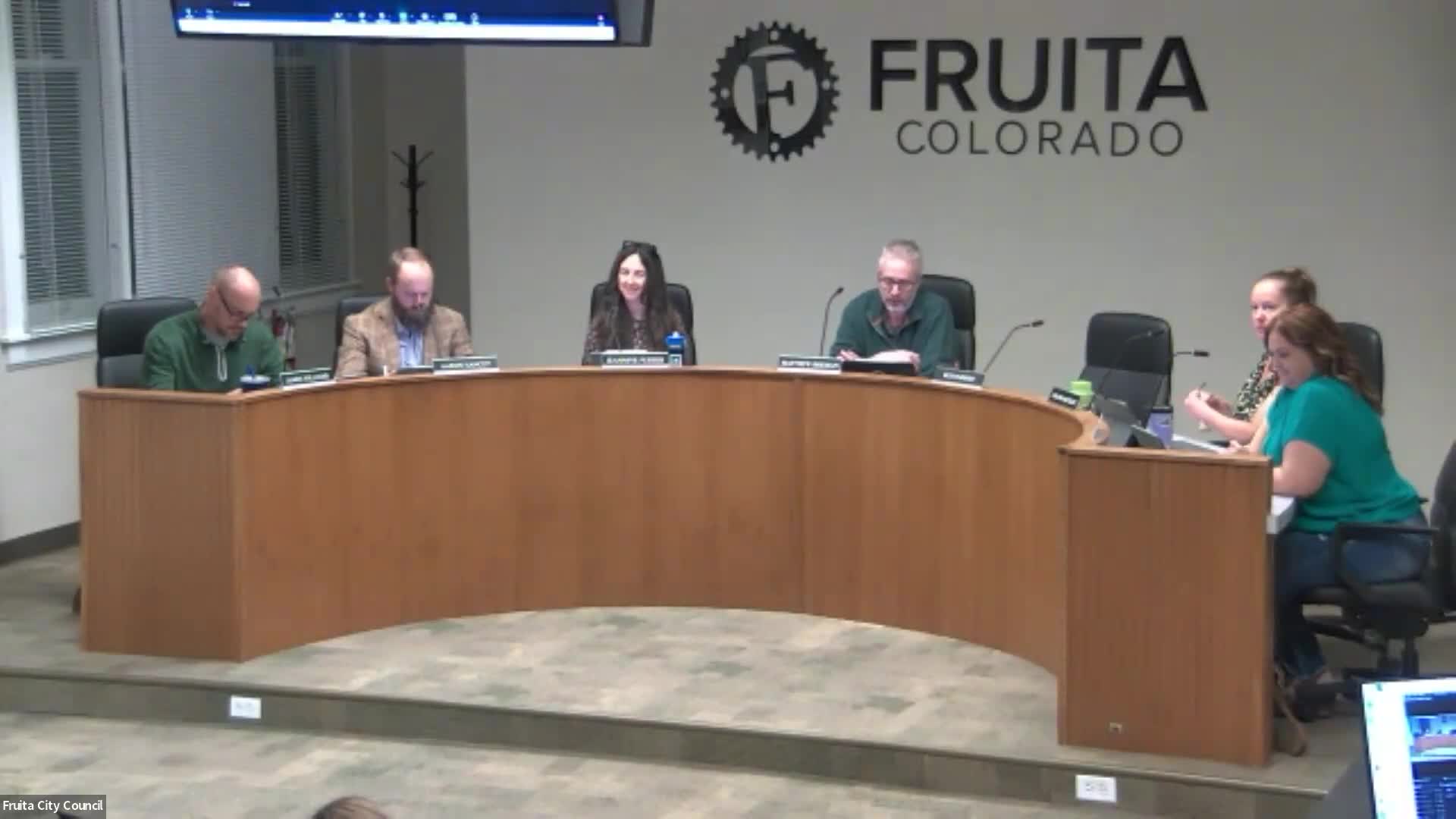Fruita Council Debates Controversial Sculpture Amid Community Concerns Over Decency
September 17, 2025 | Fruita City, Mesa County, Colorado
This article was created by AI summarizing key points discussed. AI makes mistakes, so for full details and context, please refer to the video of the full meeting. Please report any errors so we can fix them. Report an error »

In the heart of Fruita, Colorado, the city council meeting on September 16, 2025, became a platform for passionate community voices, ignited by a controversial statue displayed at Mulberry and Aspen Streets. As residents gathered under the warm glow of city hall lights, the atmosphere was charged with a mix of concern and conviction.
The evening began with a reminder for civility, urging attendees to maintain a respectful environment as they shared their thoughts. The first speaker, Jason Hair, took to the podium, expressing his strong opposition to the statue, which he described as indecent due to its explicit depiction. Hair argued that the statue contradicts Fruita's commitment to a family-friendly atmosphere, citing the town's tourism efforts that promote wholesome events like the upcoming Fruit of Fall Festival. He warned that the statue could deter visitors and harm local businesses, calling for public art that reflects the community's values.
Following Hair, Deborah Moreland, a long-time resident, echoed similar sentiments. Drawing on her experiences with past controversies in Fruita, she urged the council to consider the impact of the statue on community relationships and the town's image. Moreland emphasized the need for art that aligns with the community's character, suggesting that the current piece might not be a good fit for Fruita.
Stephanie Tartaglia added a legal perspective, referencing Supreme Court cases to argue that not all artistic expressions are protected under the First Amendment, particularly those deemed obscene. She questioned the oversight of the Arts and Culture Board, which approved the statue, and called for the city council to take responsibility for the decisions affecting public spaces.
As the meeting progressed, it became clear that the statue had stirred deep emotions and divided opinions within the community. Residents voiced concerns about the implications of the artwork on Fruita's identity and the potential for future controversies. The council listened attentively, acknowledging the importance of public input in shaping the town's cultural landscape.
As the evening drew to a close, the discussions highlighted a broader conversation about the balance between artistic expression and community standards. The outcome of this debate could shape not only the future of public art in Fruita but also the town's reputation as a welcoming destination for families and visitors alike. The council's next steps will be crucial in navigating this delicate issue, as they seek to honor both the artistic vision and the values of their constituents.
The evening began with a reminder for civility, urging attendees to maintain a respectful environment as they shared their thoughts. The first speaker, Jason Hair, took to the podium, expressing his strong opposition to the statue, which he described as indecent due to its explicit depiction. Hair argued that the statue contradicts Fruita's commitment to a family-friendly atmosphere, citing the town's tourism efforts that promote wholesome events like the upcoming Fruit of Fall Festival. He warned that the statue could deter visitors and harm local businesses, calling for public art that reflects the community's values.
Following Hair, Deborah Moreland, a long-time resident, echoed similar sentiments. Drawing on her experiences with past controversies in Fruita, she urged the council to consider the impact of the statue on community relationships and the town's image. Moreland emphasized the need for art that aligns with the community's character, suggesting that the current piece might not be a good fit for Fruita.
Stephanie Tartaglia added a legal perspective, referencing Supreme Court cases to argue that not all artistic expressions are protected under the First Amendment, particularly those deemed obscene. She questioned the oversight of the Arts and Culture Board, which approved the statue, and called for the city council to take responsibility for the decisions affecting public spaces.
As the meeting progressed, it became clear that the statue had stirred deep emotions and divided opinions within the community. Residents voiced concerns about the implications of the artwork on Fruita's identity and the potential for future controversies. The council listened attentively, acknowledging the importance of public input in shaping the town's cultural landscape.
As the evening drew to a close, the discussions highlighted a broader conversation about the balance between artistic expression and community standards. The outcome of this debate could shape not only the future of public art in Fruita but also the town's reputation as a welcoming destination for families and visitors alike. The council's next steps will be crucial in navigating this delicate issue, as they seek to honor both the artistic vision and the values of their constituents.
View full meeting
This article is based on a recent meeting—watch the full video and explore the complete transcript for deeper insights into the discussion.
View full meeting
